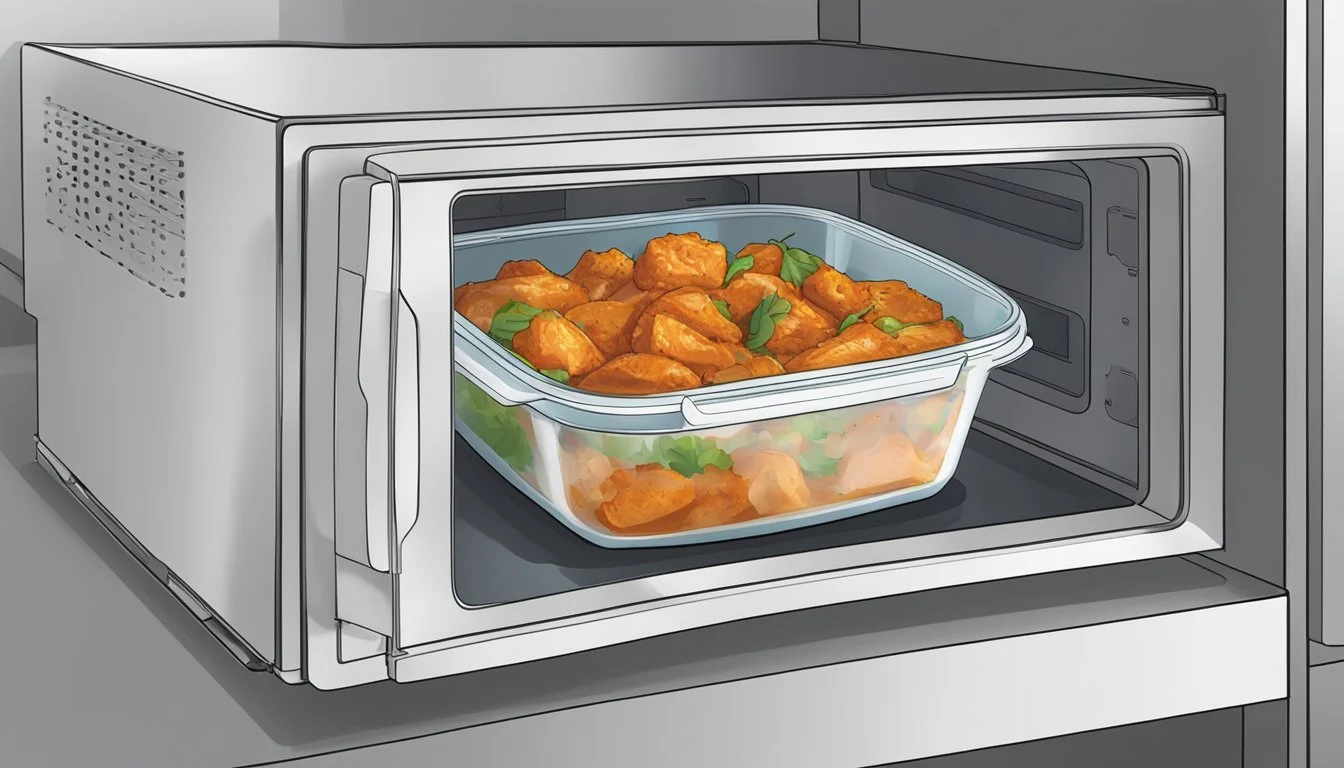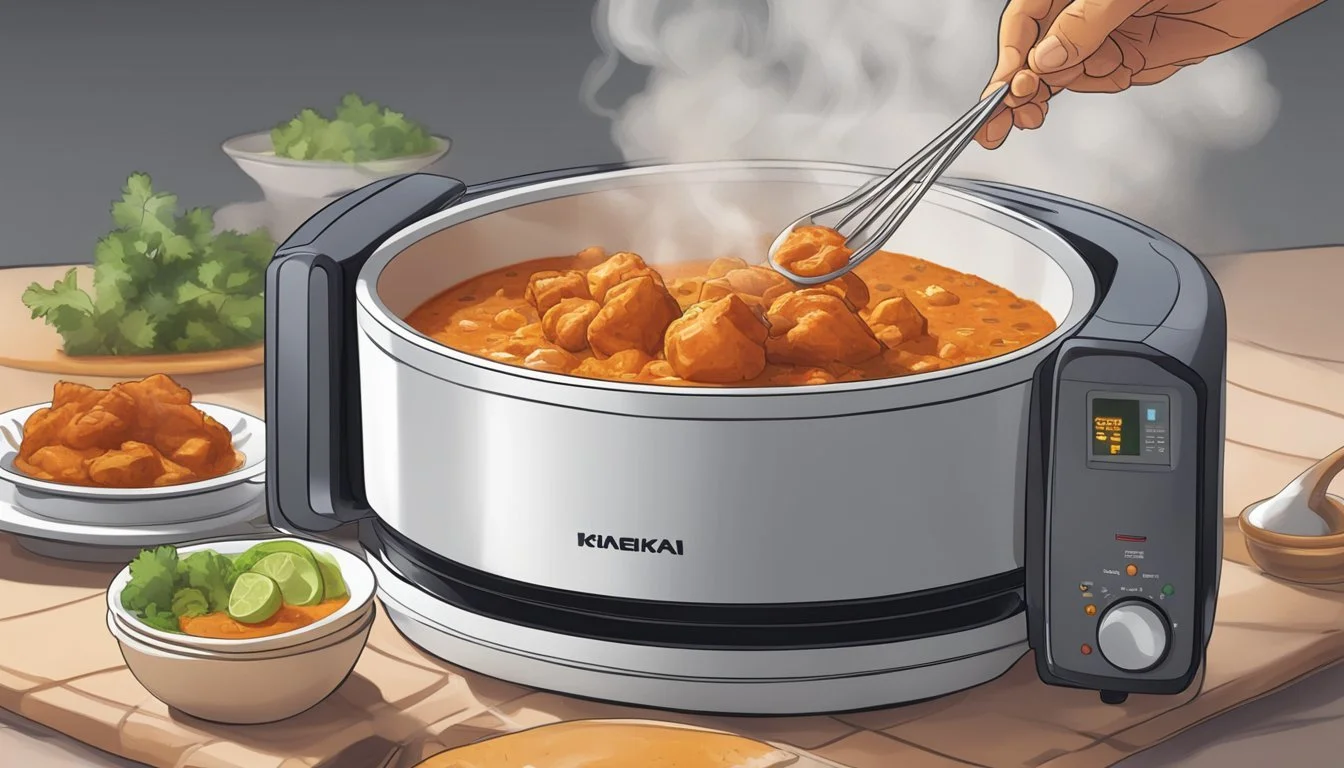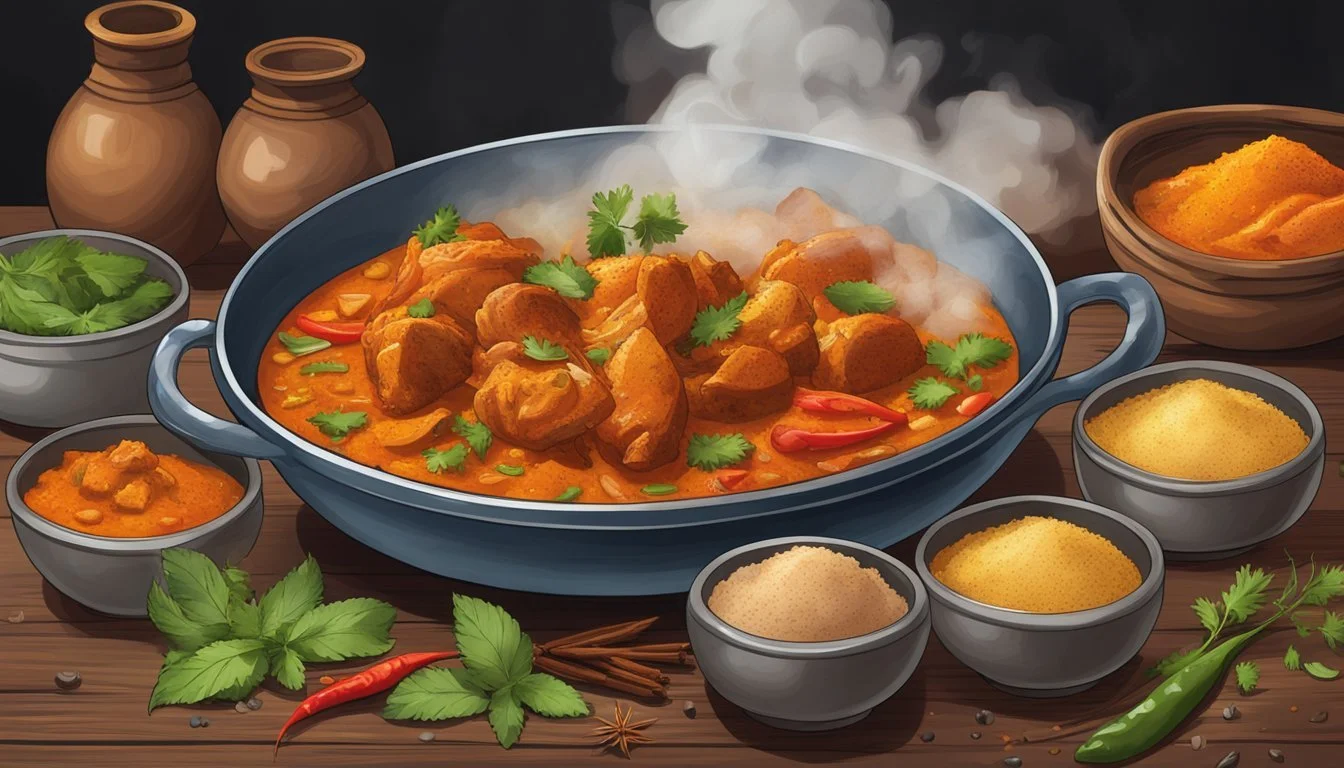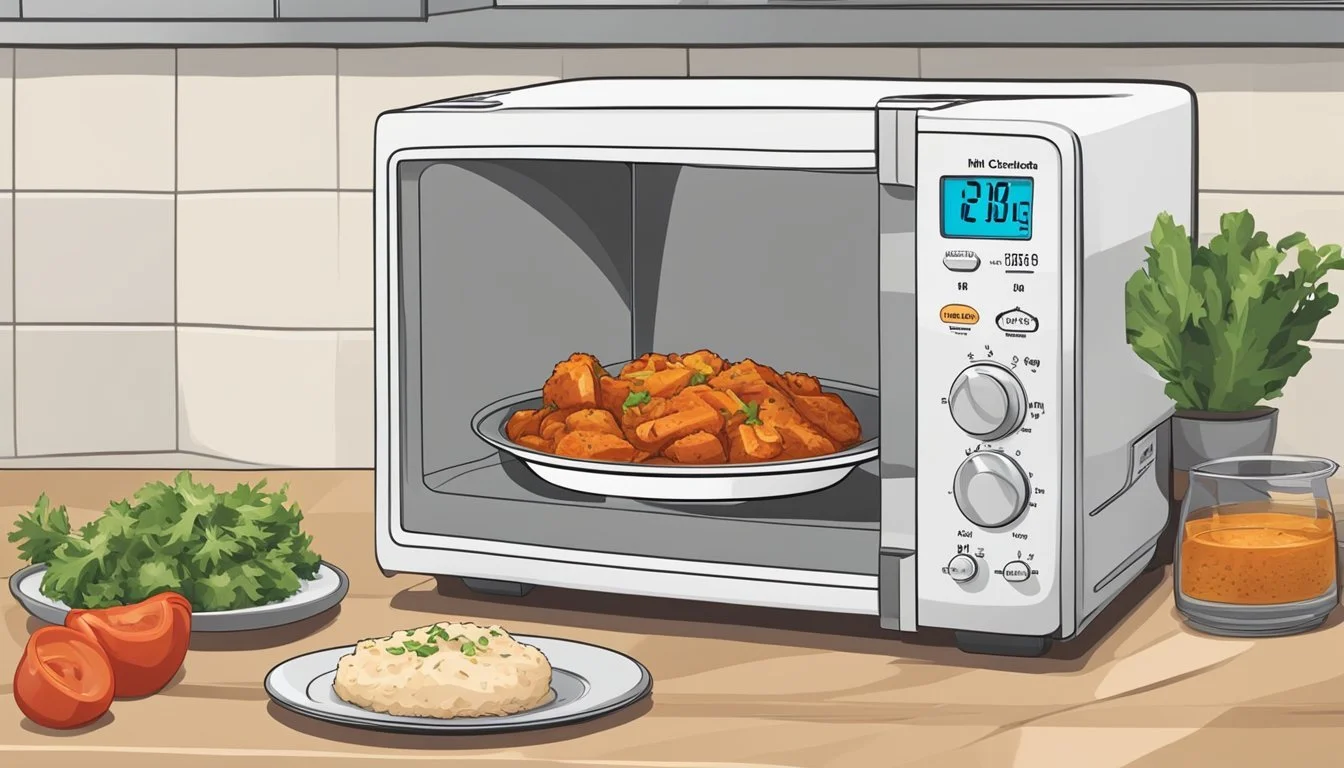Best Way to Reheat Chicken Tikka Masala
Ensuring Flavorful Leftovers
Chicken Tikka Masala (What wine goes well with chicken tikka masala?) stands out as a beloved Indian dish known for its rich flavors and creamy tomato sauce. When it comes to enjoying leftovers, reheating Chicken Tikka Masala without sacrificing its authentic taste can be a challenge. Preserving the intricate balance of spices and the succulence of the marinated chicken is crucial for a satisfying experience.
Different reheating methods can impact the flavor and texture of this dish. Using a microwave can be quick but may unevenly heat the dish and sometimes dry out the chicken. Oven reheating, on the other hand, is a gentler method that heats the masala more evenly, maintaining moisture and flavor. Meanwhile, the stovetop offers a more controlled reheating process, allowing for gradual warming and stirring, which can enhance the dish's complexity and authenticity.
To ensure the Chicken Tikka Masala remains as delightful as when it was first served, one must be cautious about reheating temperatures and duration. Heating too quickly or at too high a temperature can result in dryness, while gentle and thorough heating ensures that the flavors are revitalized. Each reheating method requires specific techniques to achieve the best flavor, whether it's evenly distributing heat or retaining moisture within the chicken and sauce.
Understanding Chicken Tikka Masala
Chicken Tikka Masala is a dish steeped in rich flavors and has a compelling history. The dish's ingredients play a pivotal role in Indian cuisine and its creamy tomato sauce is enhanced with a selection of spices that are key to its culinary significance.
History and Popularity
Chicken Tikka Masala is believed to have originated from the South Asian community in Britain and has since become a beloved dish in global cuisine. Its popularity soared due to its creamy, tomato-based sauce and its ability to suit a variety of palates, leading to its widespread acclaim in restaurants and home kitchens alike.
Key Ingredients
The essential ingredients of Chicken Tikka Masala include:
Chicken: Typically marinated in spices and yogurt, then baked or grilled.
Creamy Sauce: A rich base made from tomato sauce often includes cream or yogurt to accomplish its signature texture.
Spices: A blend consisting of garam masala, cumin, coriander, turmeric, paprika, and cayenne pepper provides the dish's distinctive flavor profile.
Culinary Significance
The culinary significance of Chicken Tikka Masala lies in its versatility and adaptability to various taste preferences. It integrates key concepts of Indian cuisine, melding the use of spices like garam masala, herbs, and seasonings to create a complex and harmonious flavor. The dish serves as an entry point for many to the rich world of Indian-inspired flavors.
Proper Storage Techniques
Before diving into reheating, one must ensure that the Chicken Tikka Masala is stored correctly to maintain its flavor and safety. Proper storage is critical for prolonging the shelf life and preventing bacterial growth.
Storing Freshly Made Dish
After cooking, one should allow the Chicken Tikka Masala to cool to room temperature. This process should take no longer than two hours to minimize the risk of bacterial growth. Once cooled, the dish should be promptly transferred to an airtight container to preserve freshness and prevent contamination.
Refrigerating Leftovers
To store leftovers in the refrigerator, they should be placed in the refrigerator within two hours of cooking. In the refrigerator, the Chicken Tikka Masala should be kept in an airtight container to avoid absorbing odors. Properly refrigerated, the dish can retain its quality for 3 to 4 days.
Temperature: Keep the refrigerator below 40°F (4°C).
Location: Store containers on shelves, not in the door, where temperature varies.
Freezing Guidelines
For longer storage, freezing Chicken Tikka Masala is a viable option. One should portion the leftovers into meal-sized quantities before freezing to make thawing easier.
Freezer Bags/Containers: Use heavy-duty freezer bags or airtight containers to prevent freezer burn.
Temperature: Ensure the freezer is at 0°F (-18°C) or lower.
Labeling: Label the container with the date to keep track of how long it's been stored.
Note: Freezing may slightly alter the texture of the sauce, but the dish will still be enjoyable when reheated properly. It's safe to store frozen Chicken Tikka Masala for up to 4-6 months.
Preparing for Reheating
Proper preparation is crucial for reheating Chicken Tikka Masala while preserving its flavor and texture. Starting with the thawing process and bringing the dish to room temperature ensures an even and gentle reheating that retains the quality of the meal.
Thawing Frozen Chicken Tikka Masala
To begin, one should transfer the frozen Chicken Tikka Masala from the freezer to the refrigerator at least 24 hours before rehe
Reheating Methods
For optimal flavor preservation during reheating, one should consider not just the heat source but also the method's appropriateness to the dish's texture and moisture content. The following techniques ensure Chicken Tikka Masala retains its creamy texture and is brought to a safe internal temperature.
Oven Reheating Technique
Using an oven for reheating Chicken Tikka Masala is effective for even heating and retaining moisture. Preheat the oven to 350 degrees Fahrenheit. The dish should be in an oven-safe container, covered with aluminum foil to prevent drying. Reheat for approximately 20 minutes, ensuring the internal temperature reaches 165 degrees Fahrenheit.
Microwave Heating Guide
The microwave offers a quick reheating method but requires careful management to avoid uneven heating. Place Chicken Tikka Masala in a microwave-safe container and cover with a microwave-safe lid or plastic wrap. Heat on high power for 3-4 minutes, stirring midway through to ensure even heat distribution. Ensure the dish reaches 70°C before consuming.
Stovetop Reheating Method
Reheating on a stovetop allows for controlled heating, which is crucial for maintaining the Chicken Tikka Masala's creamy texture. Place the dish in a pan over low-medium heat and stir occasionally. The process should take around 5-10 minutes, depending on the quantity. It is necessary to monitor the temperature to avoid overheating and ensure the food is adequately warmed throughout.
Preserving Quality and Flavor
Reheating Chicken Tikka Masala should prioritize maintaining its rich flavor and high quality. Care must be taken to ensure that the delicate spices, cream, and tender chicken retain their taste and texture throughout the reheating process.
Optimal Temperature and Time
To preserve the flavor and quality of Chicken Tikka Masala, it is important to reheat it to the correct internal temperature without overcooking. The dish should reach an internal temperature of 165 degrees Fahrenheit for safe consumption. When reheating in an oven, setting it to 350 degrees Fahrenheit and warming the dish for roughly 20 minutes is effective. If using a microwave, heating in intervals of 1-2 minutes and stirring halfway through can warm the dish evenly.
Adding Fresh Ingredients
Enhancing flavor during reheating can be achieved by incorporating fresh ingredients:
Fresh ginger and cilantro: Add a small amount after reheating to infuse fragrance and brightness.
Lemon juice: A few droplets can revive the zestiness.
One should not overdo it to ensure the original taste remains dominant.
Adjusting Spice and Creaminess
After reheating, Chicken Tikka Masala may need slight adjustments:
Salt: A pinch may be added if flavors have mellowed.
Butter, heavy cream, or yogurt: Stir in a small portion to restore creaminess and enrich the sauce.
Spices: Gently supplement with a minimal amount of original spices, like garam masala or cumin, to keep the integrity of the flavor profile.
Again, it is crucial to add these cautiously to avoid overpowering the dish.
Serving Suggestions
When serving Chicken Tikka Masala, the right accompaniments and garnishes can elevate the dish to a truly delightful experience. One should not overlook these details as they play a crucial role in enhancing the flavors and textures of the meal.
Accompaniments
A well-reheated Chicken Tikka Masala pairs excellently with basmati rice or naan bread. Rice offers a fluffy and neutral base that absorbs the rich sauce, ensuring no flavor is wasted. On the other hand, naan bread provides a tender and slightly chewy texture that complements the creamy masala sauce, allowing guests to scoop up every last bit of the dish.
Rice: Light, fluffy, and subtly aromatic.
Naan Bread: Soft, pillowy, and perfect for dipping.
Garnishing Tips
The final touch of garnish can transform the Chicken Tikka Masala from a mere dish to a feast for the eyes. A sprinkle of fresh cilantro adds a pop of color and a hint of citrusy, herbal freshness. Additionally, a wedge of lemon on the side lets guests add a touch of bright acidity to balance the creamy flavors.
Cilantro: Chop finely and sprinkle over the dish right before serving.
Lemon: Offer a lemon wedge for guests to squeeze to their liking.
Nutritional Considerations
When reheating chicken Tikka Masala, understanding its nutritional profile is essential, particularly in terms of its caloric content and macros such as protein and fiber, which can be affected by reheating.
Caloric Content
Chicken Tikka Masala, a nuanced dish known for its creamy texture and rich flavor profile, typically derives its calories from the chicken used, the cream or Greek yogurt in its sauce, and the oil in which the various spices have been fried. The caloric content can vary widely depending on the recipe's ingredients and portion sizes. However, the caloric density is generally high due to the use of heavy cream or full-fat Greek yogurt. Reheating the dish does not significantly alter its calorie count, so the nutrition information remains the same as when it is originally cooked. One serving—approximately one cup—can range from 300 to 500 calories.
Protein and Fiber Information
The chicken in Chicken Tikka Masala is a high-quality source of protein, which is essential for muscle repair and growth. A typical serving may contain between 25-35 grams of protein, contributing substantially to the daily protein requirements. The fiber content in Chicken Tikka Masala, on the other hand, depends largely on the presence of tomatoes and onions in the sauce, as well as any vegetable accompaniments or whole grains served with the dish. However, this dish is not typically considered high in fiber. Reheating the meal should retain most of the protein content while the fiber remains largely unaffected.
Advanced Tips and Techniques
In this section, we hone into the subtle nuances that elevate reheating Chicken Tikka Masala, covering everything from the differences between homemade and store-bought versions to the intricacies of marinade preparation and recreating the dish from scratch.
Homemade vs. Store-Bought Comparison
When comparing homemade to store-bought Chicken Tikka Masala, the primary difference lies in the freshness and quality of ingredients used. Homemade versions generally incorporate freshly ground spices and can be adjusted for personal taste. In contrast, store-bought meals frequently contain preservatives and may offer a less vibrant flavor profile. For reheating, homemade tikka masala often retains flavors better, as the marinate is crafted to bind robustly with the boneless skinless chicken breast.
Marinade Preparations
For an authentic Indian Dish like Chicken Tikka Masala, the marinade is key. One must use ample amounts of ginger and garlic to penetrate the chicken, allowing it to absorb the intense flavors. Allow the chicken to marinate for at least 4 hours, though overnight is ideal. This ensures that when reheated, the chicken remains tender and the spices are enlivened.
Marinade Ingredient Quantity Ginger 2 tablespoons, grated Garlic 3 cloves, minced Yogurt 1 cup Spices (Assorted) To taste
From Scratch: The Full Recipe
Recreating Chicken Tikka Masala from scratch offers complete control over the subtleties of flavor and texture. Begin with marinating the chicken in a blend of yogurt, garlic, ginger, and traditional Indian spices. For the masala sauce, cook tomatoes, cream, and spices until thickened before adding the grilled chicken. When reheating, the key is to gently warm the dish to prevent the chicken from drying out and the sauce from separating.
Cooking Tip: To reheat, simmer on low heat for about 10-15 minutes with the lid on, stirring intermittently to distribute heat and flavors evenly.
Troubleshooting Common Issues
When reheating Chicken Tikka Masala, maintaining the dish's rich texture and flavors while avoiding overheating is crucial. To ensure the dish's quality, one must address common problems such as overheating and sauce separation.
Avoiding Overheating
To prevent overcooking and keep the chicken tender, it's essential to reheat Chicken Tikka Masala gently:
Oven: Heat at a lower temperature (350 degrees Fahrenheit for about 20 minutes) and cover the dish with foil to retain moisture.
Microwave: Use medium power and limit heating time (3-4 minutes), stirring midway to distribute heat evenly.
Stovetop: Reheat on medium heat, stirring frequently for even heat distribution.
Check the internal temperature of the Chicken Tikka Masala, ensuring it reaches 165 degrees Fahrenheit to maintain optimal flavor and safety without drying out the chicken.
Dealing with Separation of Sauce
The sauce's consistency can be compromised if the fats separate. To address this:
Stirring: Regular stirring while reheating on the stovetop can help in re-emulsifying separated sauces.
Low Heat: Gently heating on a low flame minimizes the risk of sauce separation and helps preserve the creamy texture.
Additional Liquid: If the sauce has thickened too much upon cooling, add a small amount of water or cream and stir well to restore the desired consistency.
By attentively managing the heat and stirring, one can preserve the integrity of the sauce and ensure a savory experience with every reheated serving.
Health and Safety Measures
When reheating Chicken Tikka Masala, maintaining health and safety standards is crucial to prevent foodborne illnesses. Adhering to proper internal cooking temperatures and avoiding cross-contamination are pivotal steps in serving a safe and enjoyable dish.
Preventing Contamination
One must be vigilant about preventing contamination during the reheating process. Users should ensure that all utensils, cookware, and surfaces are thoroughly cleaned before starting. It’s important to use separate chopping boards and knives for different ingredients, especially when handling raw and cooked foods. Additionally, one should always wash their hands before and after handling food to minimize the risk of spreading bacteria.
Understanding Internal Cooking Temperatures
Correct internal temperature is paramount for the safety of reheated Chicken Tikka Masala, reducing the risk of harmful bacteria. According to food safety guidelines, Chicken Tikka Masala should be reheated to an internal temperature of at least 165°F (74°C) to assure it’s safe to consume. Using a food thermometer helps in achieving the precise temperature. Here’s a simple reference table:
Food Item Internal Temperature Chicken Tikka Masala 165°F (74°C)
Reheated food should not sit out at room temperature for longer than two hours, as this is when bacteria can grow rapidly. If left out, it should be discarded for health safety reasons.
Frequently Asked Questions
How should one reheat Chicken Tikka Masala? To reheat Chicken Tikka Masala, one can use the microwave or oven. In the microwave, heat the dish at 50% power for 2-3 minutes, stirring halfway. In the oven, cover the dish with foil and bake at 350°F for 20-25 minutes.
Can Chicken Tikka Masala be frozen? Yes, it can be frozen. Ensure it's cooled down before transferring to a freezer-safe container. It can be stored frozen for up to 2-3 months. Thaw in the refrigerator before reheating.
What's the best way to store leftovers? Leftovers should be cooled to room temperature, then stored in an airtight container in the refrigerator and consumed within 3-4 days.
Is it safe to reheat Chicken Tikka Masala multiple times? It's not recommended to reheat Chicken Tikka Masala multiple times as it can lead to foodborne illness and deteriorate the quality and taste.
How to maintain the best flavor when reheating? To maintain the best flavor, reheat gently. If using a saucepan, stir occasionally to heat evenly. Avoid boiling or overcooking the sauce to prevent the meat from toughening and the sauce from curdling.
Does reheating affect the ingredients? Reheating can cause some ingredients to lose their texture, especially if reheated improperly. Delicate herbs should be added after reheating for freshness.
Can I marinate the chicken before freezing? Marinating the chicken before freezing is fine and can even enhance the flavors upon cooking. However, for Chicken Tikka Masala, since the chicken is already cooked in the sauce, additional marinating is not necessary.
Conclusion
When reheating Chicken Tikka Masala, maintaining the quality and flavor of this beloved dish is crucial. It's easy to make yet challenging to preserve that just-cooked taste in leftovers. To achieve the best results, the choice of reheating method should align with one's kitchen equipment and time constraints.
Microwave Reheating: Fast and convenient, one should place the Chicken Tikka Masala in a microwave-safe container, cover it, and heat it on high for a few minutes, stirring halfway through to ensure even heating. This method is suitable for those seeking a quick solution.
Oven Reheating: Ideal for texture retention, one should preheat the oven, transfer the dish to an oven-safe container, cover it to prevent drying out, and heat it until it reaches a safe internal temperature. This method takes longer than microwaving but can yield superior results in flavor preservation.
Stovetop Reheating: For those prioritizing flavor, gently reheating Chicken Tikka Masala in a pan over low-medium heat can help sustain the dish's quality and taste. Regular stirring and careful monitoring are essential to prevent burning.
Whichever method one chooses, they should avoid overheating to maintain the integrity of the Chicken Tikka Masala, ensuring each bite is as delightful as the first. Considering these tips will ensure that the easy-to-make, flavorful qualities of the dish remain intact, providing a satisfying meal even on the second serving.









